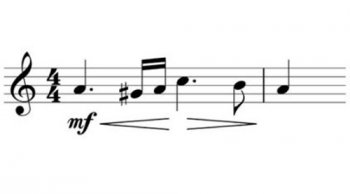Udemy Learn to Read Music TUTORiAL

P2P | Dec 23 2017 | 944 MB
This course is in in-depth journey through all the things that are present in a musical score. It will help you to understand the confusing mass of dots, lines, and words that are used. Together we will be to understand how you can engage more with the written notes, so that you can find newer, more interesting ways to express yourself through music.
Understand and engage with written music with the information you will gain from this course.
Learn how to read the actual notes
Understand how to read the rhythms
Recognize the words that are used for speed, loudness, etc.
Find out what the composer wanted to piece to sound like
Learn how to add your own personality to the pieces that you play
Many composers and musicians choose to use musical notation to put their ideas down on paper. They have been doing this for hundreds of years, and for them, their music has endured past their death in its written form. Great musicians such as Mozart, Beethoven and Chopin have left their legacy in the form of pages of written music. Anybody that wishes to pursue a career in music would greatly benefit from knowing how to read.
Unlike other courses, which just help you to find certain notes on particular instruments, this course is designed to cover more of the music in more detail. You will finish the course with not only the ability to recognize notes, but also speed (called tempo), loudness (called dynamics), rhythms, and the expressive, emotive content of the written notes.
You will begin with learning about what each of the notes are called and how we write them in musical notation. We then proceed to look into rhythms, starting with very basic rhythms, going into more advanced examples. In each of these sections you will see numerous examples you guide you through the process.
From this basis you will start learning about things like tempo (speed) and dynamics (loudness). We will also see what other things composers use to tell you (the performer) what to do. From this, we look at a few real-life examples of musical notation, and you will see how all of the things we learnt about so far are used. The most incredible thing you will see is that most music uses the same things to say many different things.
We end up with a brief discussion of different ways of writing music, which may help you to see how any types of music can be written down.
Upon completing the course, you will receive a certificate of completion from the instructor, you will be welcome to submit topics that you want to be covered in more detail, and the doors to the fascinating world of music will be opened up to you.
